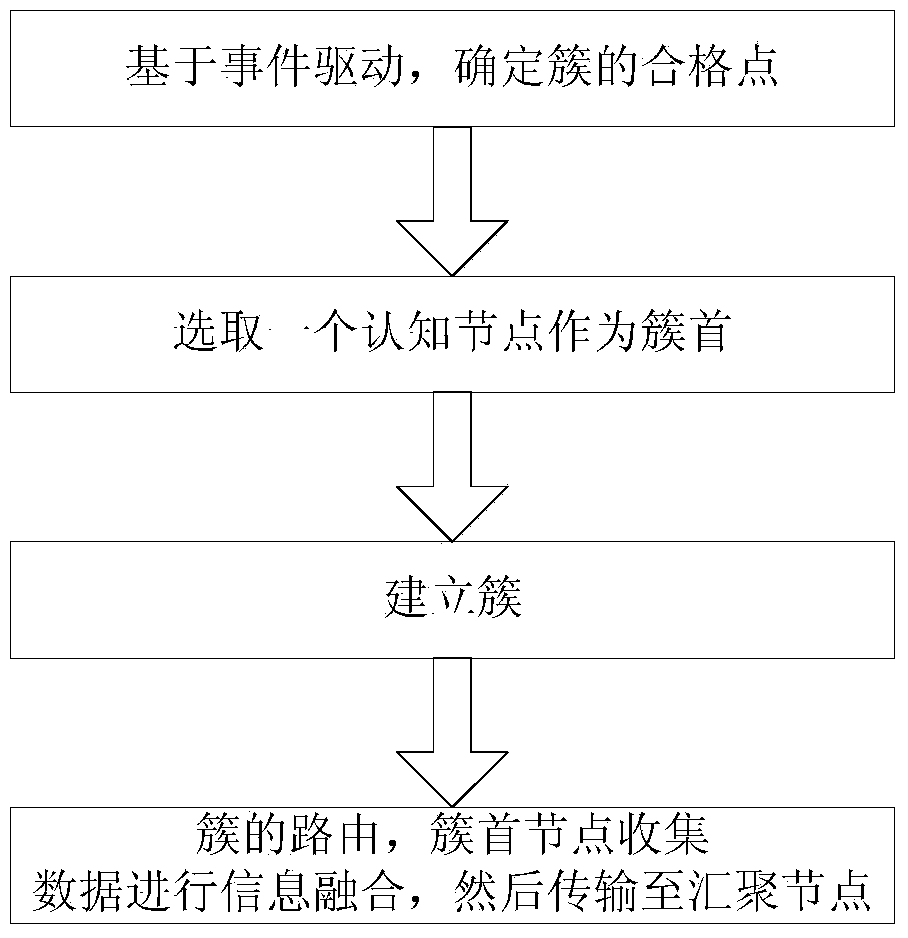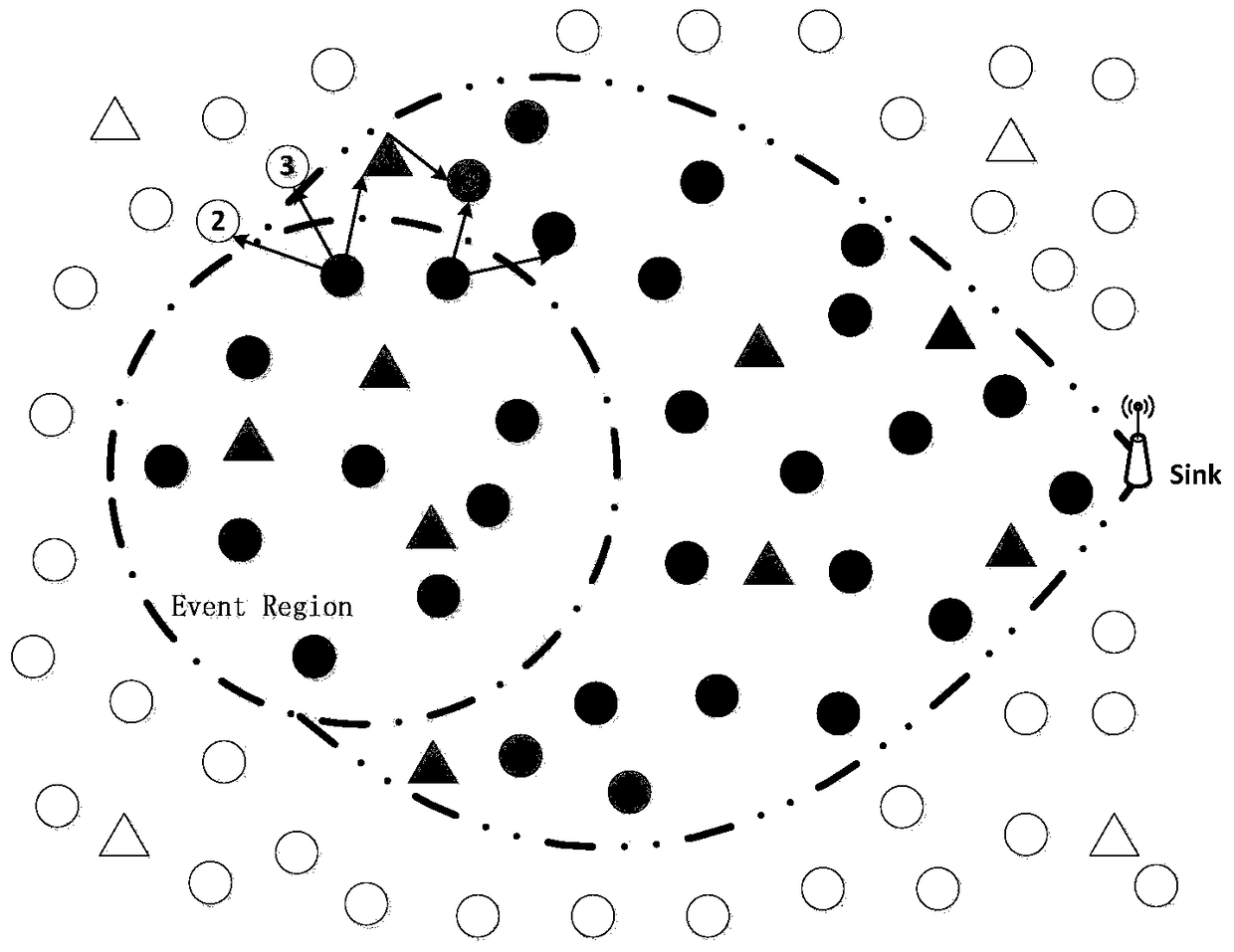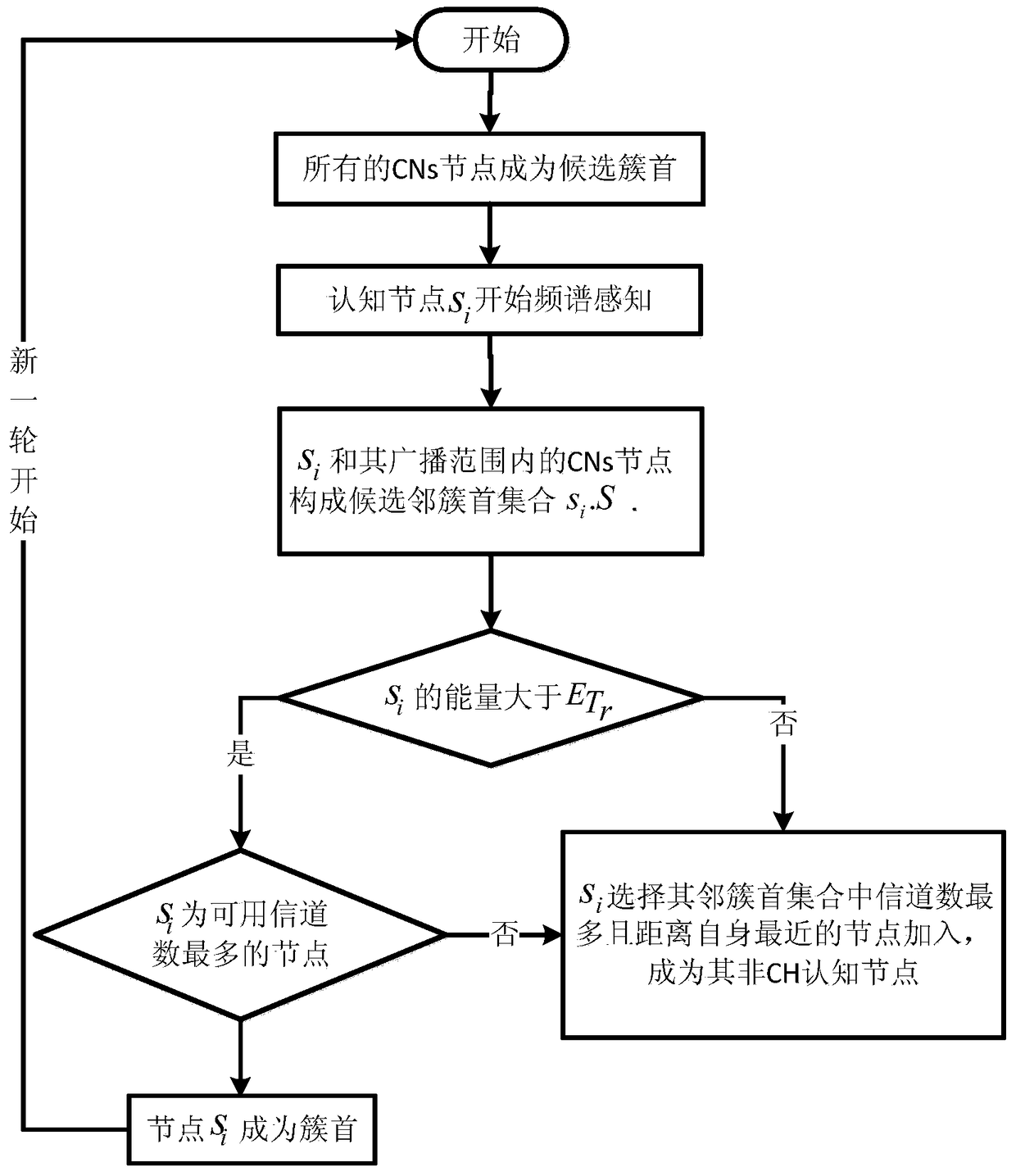Event-driven clustering routing method in wireless cognitive sensor network
A sensor network, event-driven technology, applied in the direction of network topology, wireless communication, electrical components, etc., can solve the problems of consuming energy and processing power of sensor nodes, limited processing power, increasing the production cost of cognitive sensor nodes, etc., to extend the network Life cycle, solving energy consumption, good practical value effect
- Summary
- Abstract
- Description
- Claims
- Application Information
AI Technical Summary
Problems solved by technology
Method used
Image
Examples
Embodiment Construction
[0042] The preferred embodiments of the present invention will be described in detail below with reference to the accompanying drawings.
[0043] The present invention provides an event-driven clustering routing method in a wireless cognitive sensor network. The sensor network includes cognitive nodes, common sensor nodes and convergence nodes. The common sensor nodes do not undertake spectrum sensing functions, but are only responsible for source sensing ; The cognitive node has a cognitive function and is responsible for spectrum sensing. Based on event-driven clustering routing methods, such as figure 1 As shown, it specifically includes the following steps:
[0044] Step 1) Determine the qualified points of the cluster, select some cognitive nodes and common sensor nodes as the qualified points of the cluster;
[0045] Step 1-1) Event detection; clusters are formed only when an event occurs, and the clustering routing protocol is triggered by the event. The first step i...
PUM
 Login to View More
Login to View More Abstract
Description
Claims
Application Information
 Login to View More
Login to View More - R&D
- Intellectual Property
- Life Sciences
- Materials
- Tech Scout
- Unparalleled Data Quality
- Higher Quality Content
- 60% Fewer Hallucinations
Browse by: Latest US Patents, China's latest patents, Technical Efficacy Thesaurus, Application Domain, Technology Topic, Popular Technical Reports.
© 2025 PatSnap. All rights reserved.Legal|Privacy policy|Modern Slavery Act Transparency Statement|Sitemap|About US| Contact US: help@patsnap.com



